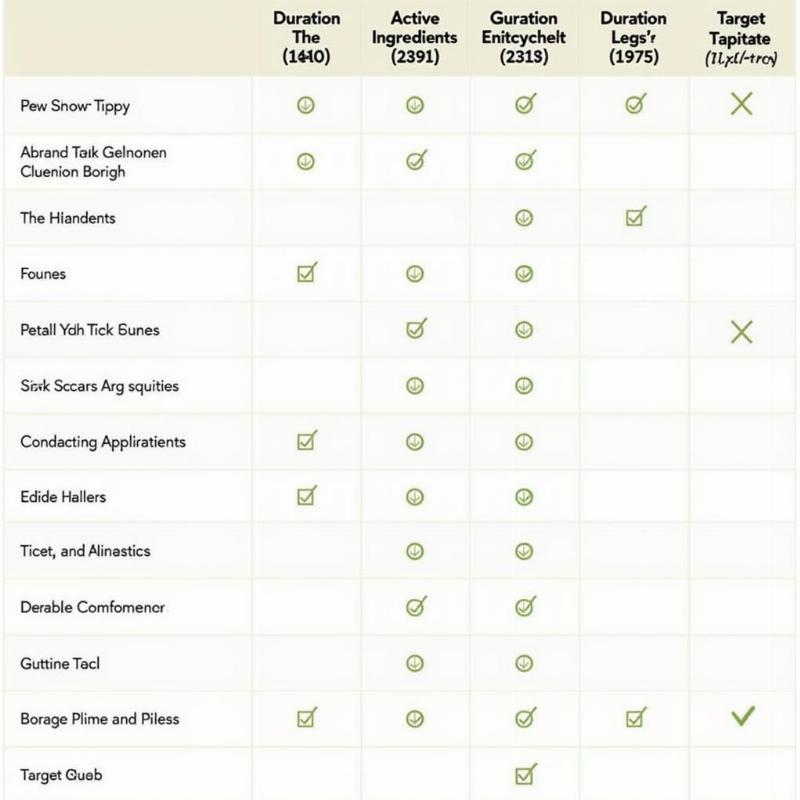Flea and tick tags for dogs are a popular choice for pet owners seeking convenient and long-lasting protection against these pesky parasites. But with so many options available on the market, how do you choose the right flea and tick tags for your dog’s specific needs? This comprehensive guide will walk you through everything you need to know about flea and tick tags, from how they work to important safety considerations and choosing the best product for your furry companion.
Understanding Flea and Tick Tags: How They Work and Why They Matter
Flea and tick tags are small, plastic devices attached to your dog’s collar. They release active ingredients that spread through your dog’s skin and coat, killing fleas and ticks on contact. These tags offer several advantages, including long-lasting protection (typically up to several months), water resistance, and ease of application. Protecting your dog from fleas and ticks is crucial not only for their comfort but also for their health. These parasites can transmit diseases like Lyme disease, Rocky Mountain spotted fever, and ehrlichiosis, which can have serious consequences for your dog’s well-being.
Types of Flea and Tick Tags: Exploring the Options
There are various types of flea and tick tags available, each using different active ingredients to repel and kill parasites. Some common types include those containing imidacloprid, flumethrin, amitraz, and deltamethrin. It’s essential to consult with your veterinarian to determine which type of tag is best suited for your dog, considering their age, breed, health status, and lifestyle. Some tags are designed for puppies and small dogs, while others are formulated for larger breeds.
 Comparison chart of different flea and tick tag brands
Comparison chart of different flea and tick tag brands
Choosing the Right Flea and Tick Tag: Factors to Consider
Several factors play a role in selecting the right flea and tick tag for your dog. Consider your dog’s lifestyle: Does your dog spend a lot of time outdoors, swimming, or interacting with other animals? Also, think about the prevalence of fleas and ticks in your area. Consulting with your veterinarian is crucial to ensure the chosen tag is safe and effective for your dog’s specific needs.
Applying Flea and Tick Tags: A Step-by-Step Guide
Once you’ve chosen the right tag, proper application is key to its effectiveness. Carefully remove the tag from its packaging, following the manufacturer’s instructions. Attach the tag securely to your dog’s collar, ensuring it lies flat and is not obstructed by other accessories. Wash your hands thoroughly after application and monitor your dog for any signs of irritation or allergic reactions.
Safety Considerations: Protecting Your Dog and Family
While flea and tick tags are generally safe, it’s essential to follow safety guidelines to protect your dog and family. Ensure the tag is securely attached to the collar to prevent your dog from chewing or ingesting it. Monitor your dog for any signs of skin irritation, redness, or excessive scratching at the application site. If you notice any adverse reactions, consult your veterinarian immediately. Store unused tags out of reach of children and pets.
Conclusion: Ensuring Your Dog’s Protection from Fleas and Ticks
Choosing the right flea and tick tags for dogs requires careful consideration of various factors, including your dog’s individual needs, lifestyle, and the prevalence of parasites in your area. By understanding the different types of tags available, following proper application procedures, and adhering to safety guidelines, you can ensure your furry friend receives effective and long-lasting protection from these troublesome pests. Remember to consult with your veterinarian for personalized recommendations and to address any concerns you may have.
FAQ: Frequently Asked Questions about Flea and Tick Tags
- How long do flea and tick tags typically last? Most flea and tick tags provide protection for several months, typically ranging from three to eight months, depending on the brand and specific product.
- Are flea and tick tags safe for puppies? Some flea and tick tags are specifically formulated for puppies and small dogs. Always consult your veterinarian before using any flea and tick product on a puppy.
- Can my dog swim while wearing a flea and tick tag? Most flea and tick tags are water-resistant, but it’s essential to check the product label for specific instructions regarding swimming and bathing.
- What should I do if my dog has an allergic reaction to a flea and tick tag? Remove the tag immediately and contact your veterinarian.
- Where can I purchase flea and tick tags for my dog? Flea and tick tags are available at various pet stores, veterinary clinics, and online retailers.
- Are there any natural alternatives to flea and tick tags? Yes, there are several natural alternatives, such as essential oil-based repellents and diatomaceous earth. Consult with your veterinarian to discuss these options.
- Can I use multiple flea and tick prevention methods at the same time? Using multiple flea and tick prevention products simultaneously can be harmful. Consult your vet before combining methods.
Beautdogs.us is your premier resource for all things dog-related in the US. We offer expert advice on dog breeds, care, and lifestyle, providing a trusted source of information for both novice and experienced dog owners. From finding the perfect dog friendly hotels on block island to understanding florida health certificate for dogs requirements, we’ve got you covered. We also provide valuable resources like a no more dead dogs summary and tips for off leash hiking with dogs. Looking for jekyll island dog friendly rentals? We have that too! Connect with us for personalized guidance and support: Email: [email protected], Phone: +1 501-555-7529. Beautdogs.us – your trusted partner in dog ownership.